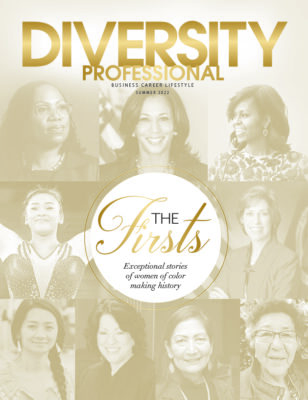Financial Deja Vu: Capital Investments Remain Elusive For Women Entrepreneurs
Raising capital is a challenge for any entrepreneur but women business owners still face a tough row to hoe when it comes to securing venture capital.
“Access to capital continues to be one of the biggest barriers for women entrepreneurs. Women-led firms struggle to obtain mainstream forms of funding,” per a National Women’s Business Council 2019 congressional committee report, but it could have been written in 1989 or 1999 or 2009. The story hasn’t changed significantly in 30 years.
Women business founders/leaders are painfully aware that there is no business without capital. Business capital is a core part of running a business. And yet, women only receive 4% of all commercial loans. According to Pitchbook, although women received 4.9% of all venture capital deals, the dollar amount of the deals was just over 2% of venture capital funding in 2016. The questions behind these disparities are threefold: Why it’s still difficult for female entrepreneurs to raise venture capital? What’s being done to alleviate the issue? And, where do they go from here?
Why is it still difficult for female entrepreneurs to raise capital? Easy to ask, difficult to answer. We often forget that women couldn’t hold a credit card or take out a loan without a male until the late 1970s, early 1980s. It was difficult for women to establish individual credit even then. This was considered the period that marks the rise of private equity and venture capital as it is today. Were women able to get funding during that time? There’s not much research dating that far back. It’s not until the mid-2000s that 10-year retrospectives began to appear. According to Fortune.com, in 2006, female founders were involved in only 2.95% of venture capital deals and received $.33 billion in venture funding. That’s 67 deals, compared to 2075 deals for male-founded companies.
Today, although women can now establish credit scores, secure loans and have received 4.9% of all venture capital deals, they are burdened with higher student debt and lower credit scores. Biz2Credit found that the average credit scores for women-owned businesses dropped 10 points in 2018 and trailed the scores of male counterparts by 25 points. Prior to starting a business, women in the workforce earn less than men thus continuing the credit score burden. Women have gone from no credit score to lower credit scores. And thus, the cycle continues.
Another answer to the question brings us to more esoteric issues like sexism and societal behaviors. Laura Huang, an associate professor at Harvard Business School, conducted research examining the cognitive and social forces that influence entrepreneurial investment decisions. In her article, “Why Female Entrepreneurs Have a Harder Time Raising Venture Capital,” Huang writes about the possibility that the quality of the interaction between an entrepreneur and an investor is driving the disparity in investment decisions. Huang and her colleagues observed the Q&A interactions at TechCrunch Disrupt and analyzed the interactions using linguistic analysis and manual coding. They found that men were asked “promotion-focused” questions that allowed them to demonstrate possible opportunities. Women were probed with “problem-focused” questions on limitations and potential problems that might arise. The good news is that those women who were able to pivot their responses to “promotion-focused” were able to raise more money.
What’s being done to alleviate the problem? In 2017, Opportunity Zones were created in the 2017 Tax Reform Bill to provide the opportunity for investment in low income areas. WIPP (Women Impacting Public Policy) suggests that the program should be expanded to include smaller and shorter-term investors and that small businesses have traditionally been willing to take risks and provide opportunities in these areas. WIPP says in their 2019 plan that they will continue to support policies that encourage access to alternative financing options such as online lending, crowdfunding and expansion of the SBA’s Microloan program. NWBC (National Women’s Business Council) is tackling the potential benefits of alternative financing solutions, such as crowdfunding, and better tailored training for the Women-Owned Small Business (WOSB) federal procurement program.
There seems to be a theme to the public policy responses to this issue—alternative forms of funding. Pitchbook published an article by Sean Lightbrown titled, “Why Women Investing in Women Matters.” Lightbrown suggests, “For many, one key way to overcome this is to correct the imbalance on both investment and founder teams. At the base level, having male-dominated investment teams leads to the fulfillment of the familiarity principle: people gravitating and liking more things that are familiar to or resemble them.” In essence, the solution is for more women to join the VC pool to diversify venture capital. The good news—there are more women led clubs, investment circles and angel investors than ever before. The new generation of women venture capitalists are bringing about change but there’s still a long way to go.
Where do we go from here? To summarize: Learn how to pitch and respond in a “promotion-focused” manner. Continue to press for government backed solutions i.e. the SBA. Look for alternative forms of funding. Find and develop more diversity in venture capital.
And, finally—keep up the pressure for change—1.95% growth over 13 years in venture capital deals for women isn’t an acceptable return.
ACCORDING TO FORTUNE.COM, IN 2006, FEMALE FOUNDERS WERE INVOLVED IN ONLY 2.95% OF VENTURE CAPITAL DEALS AND RECEIVED $.33 BILLION IN VENTURE FUNDING. THAT’S 67 DEALS, COMPARED TO 2075 DEALS FOR MALE-FOUNDED COMPANIES.









